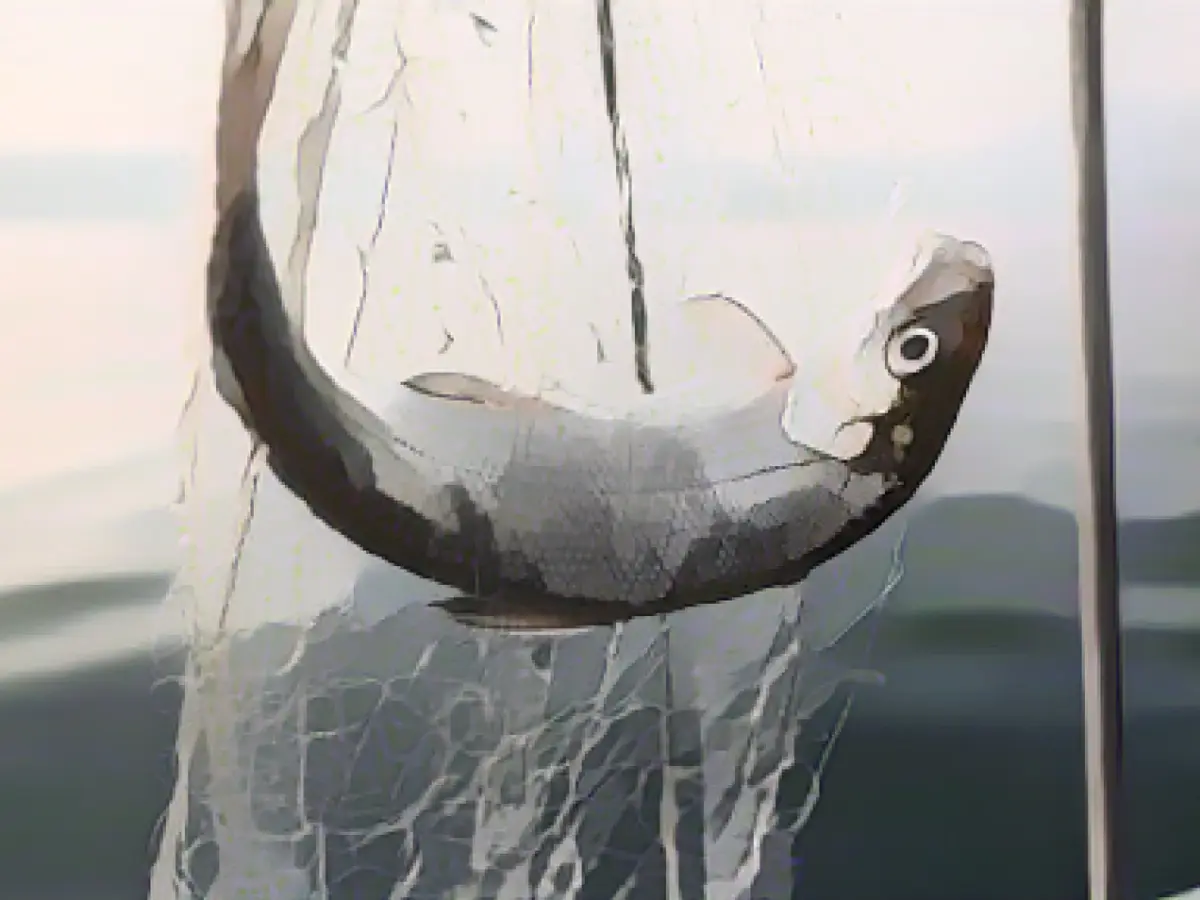Fishing - Catch ban for whitefish in Lake Constance begins
A three-year closed season will begin on Monday (January 1) to allow whitefish stocks in Lake Constance to recover. The fish may not be caught until 2027. The effects of the closed season will be reviewed regularly, as explained by the International Board of Commissioners for Lake Constance Fisheries (IBKF).
The IBKF decided on the closed season last June following a massive slump in catch figures. For monitoring purposes, state fisheries inspectors would set nets at several points in the lake every month. Compliance with the adapted fishing laws will continue to be monitored by the fisheries inspectors of the neighboring countries Austria, Germany and Switzerland.
Whitefish struggle with competition
Whitefish yields have been declining for years. In 2022, they slumped to just over 20 tons. According to statistics, around 107 tons of whitefish were caught in 2021. From a scientific perspective, there is no alternative to the fishing ban in order to save the bluefish fishery.
There are many reasons for the dramatic decline in yield. On the one hand, the whitefish are finding less food because Lake Constance has become nutrient-poor again.
However, according to fish experts, the stickleback is currently playing the biggest role. The small silver fish was first detected in Lake Constance at the beginning of the 1950s and, after decades of inconspicuous growth, has surprisingly multiplied explosively since 2012.
According to the Fisheries Research Center in Langenargen, it now accounts for more than 90 percent of the fish in open water. It eats the whitefish's plankton and also preys on their eggs and larvae.
Breeding new whitefish
As a measure alongside the closed season for whitefish, hatcheries on Lake Constance therefore only want to release whitefish larvae into the lake when they are too big to serve as food for sticklebacks. The spawning fishery, which serves as the basis for rearing new whitefish, was surprisingly successful in December, said Alexander Brinker, head of the fisheries research center.
Around 245 liters of spawn in good condition were harvested. Next spring, many hundreds of thousands of small whitefish larvae will be released into the lake in the hope of successfully rebuilding the whitefish population.
Criticism from fishermen
For the more than 60 fishermen on Lake Constance, the fishing ban is a radical change. The fish, which is popular with tourists and locals alike, is regarded as the flagship of the fishing industry. Most professional fishermen do not see a three-year closed season as the solution.
"Whitefish have too little protection as long as other disruptive factors such as the nutrient depletion of the lake, sticklebacks and cormorants continue," said Elke Dilger, Chairwoman of the Association of Professional Fishermen in Baden. "If you want to do something, then you have to take care of everything." The fishermen also blame the fish-eating cormorant for the decline and have been calling for cormorant management for more than 20 years, with cormorants being shot if necessary.
Lake Constance fishing as an old tradition
Lake Constance fishing is an old tradition and a source of food for the people of Lake Constance that is already in danger of disappearing, he said. Only around 30 professional fishermen still regularly go out on the lake.
There can be no question of overfishing the lake with such figures, and fishing rights had already been reduced in 2018 and adjusted to the declining fish population. A combination of several factors is responsible for the decline in whitefish, which cannot be regulated by a simple fishing ban.
There are currently three different whitefish species in Lake Constance: bluefish, sand whitefish and whitefish. The particularly important bluefish rarely lives close to the shore and is found almost exclusively in open water. The fish is not yet officially considered endangered. Whitefish have few bones and are therefore popular with fishermen and consumers.
Fish in Lake Constance Information on the IBKF Chronicle of Lake Constance Fishing
Read also:
- A clan member is punished here
- Traffic lawyer warns: Don't talk to the police!
- Will he be convicted as Jutta's murderer after 37 years?
- He also wanted to kill his cousin
- Despite the closure, state fisheries inspectors from neighboring countries Austria, Germany, and Switzerland will continue to monitor compliance with the adapted fishing laws in Lake Constance.
- The closed season for whitefish in Lake Constance began on January 1, 2023, to allow the whitefish stocks to recover, as the International Board of Commissioners for Lake Constance Fisheries (IBKF) decided in June 2022 due to a massive slump in catch figures.
- The decline in whitefish yields has been happening for years, with the fish catches slumping to just over 20 tons in 2022, compared to 107 tons in 2021.
- Whitefish struggles with competition due to the nutrient-poor Lake Constance and the aggressive stickleback, which was first detected in the lake in the 1950s and expanded rapidly since 2012.
- Breeding new whitefish larvae will be an additional measure as they are released into the lake only when they are big enough to avoid being consumed by sticklebacks, according to the fisheries research center in Langenargen.
- Located between Austria, Bavaria, Baden-Württemberg (Germany), and Switzerland, Lake Constance is a popular fishing location and source of food with a long tradition, but its whitefish population declined due to several factors, including nutrient depletion, sticklebacks, cormorants, and fishing pressure.
Source: www.stern.de








